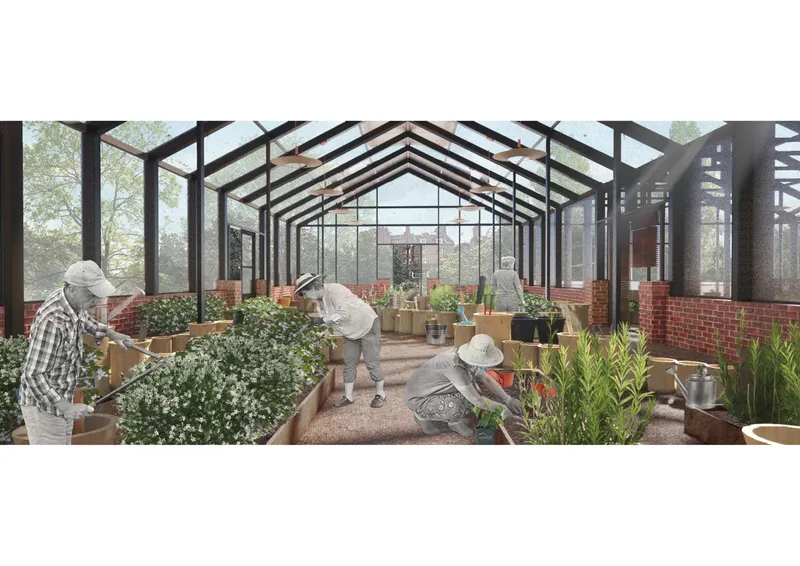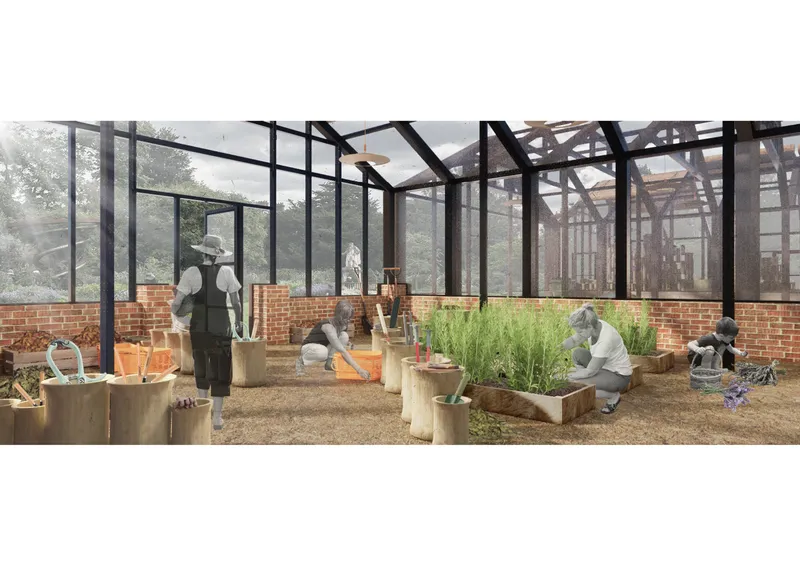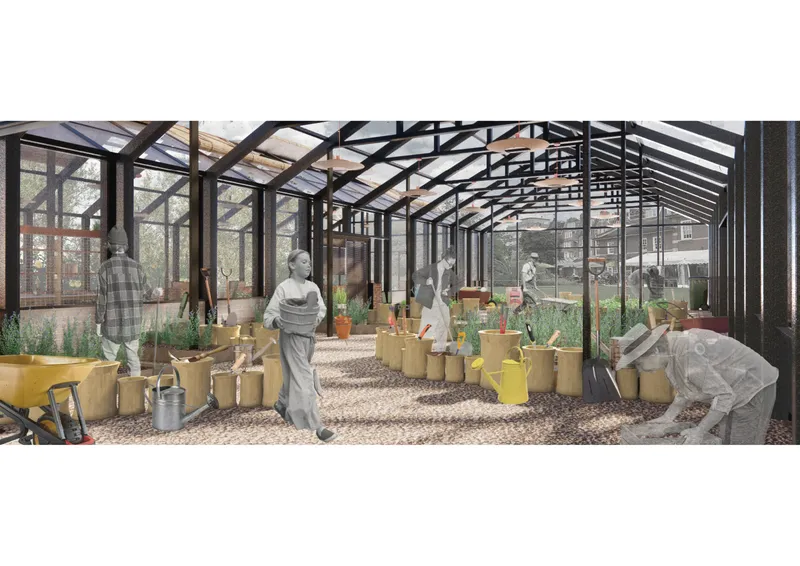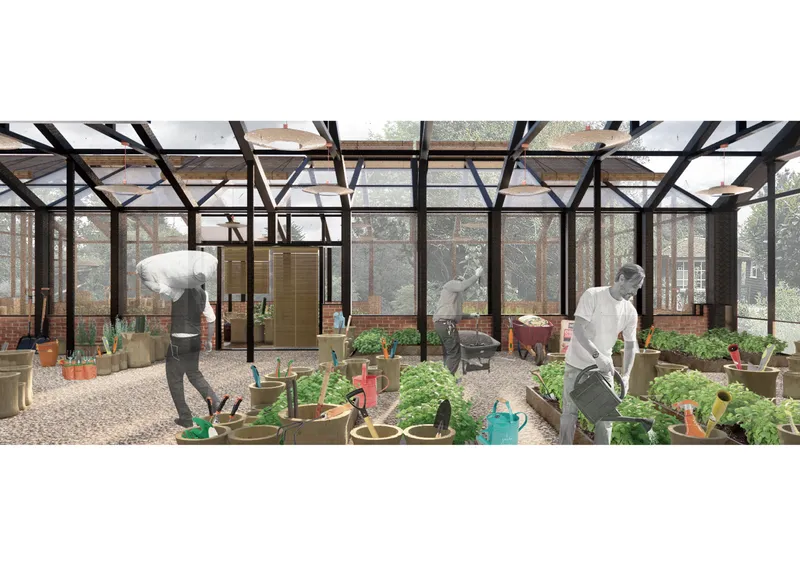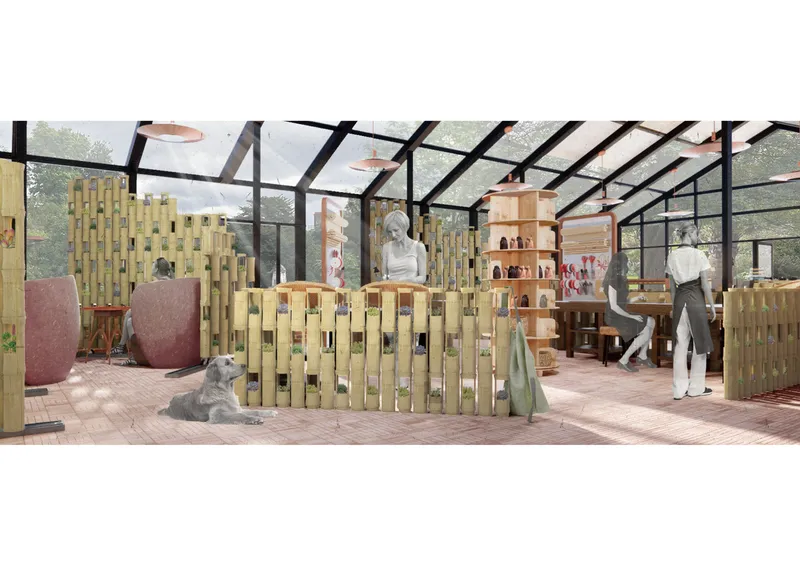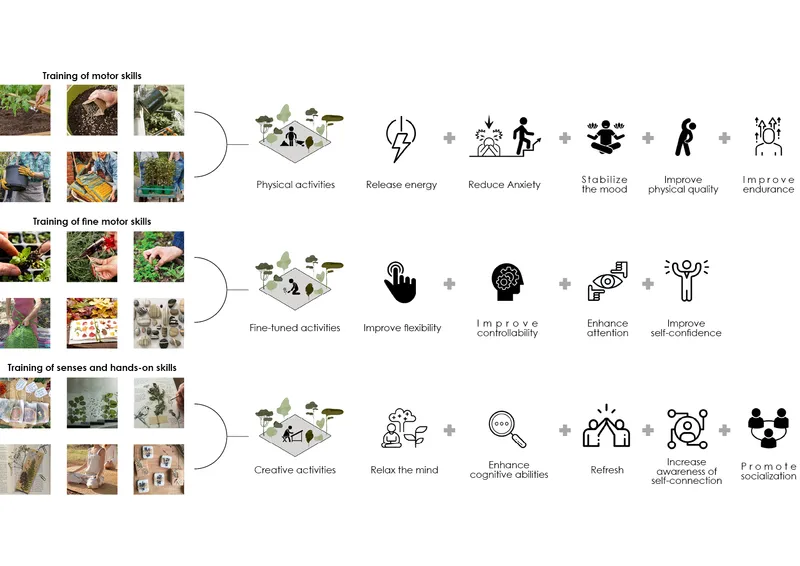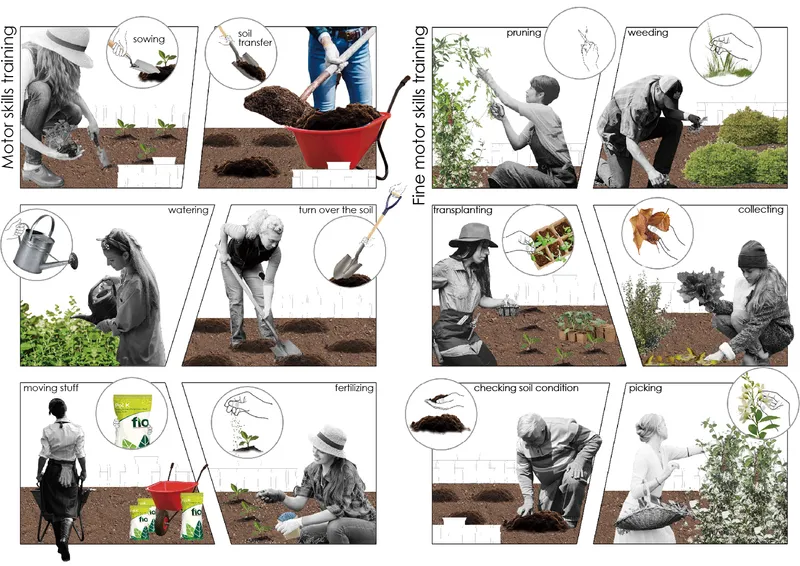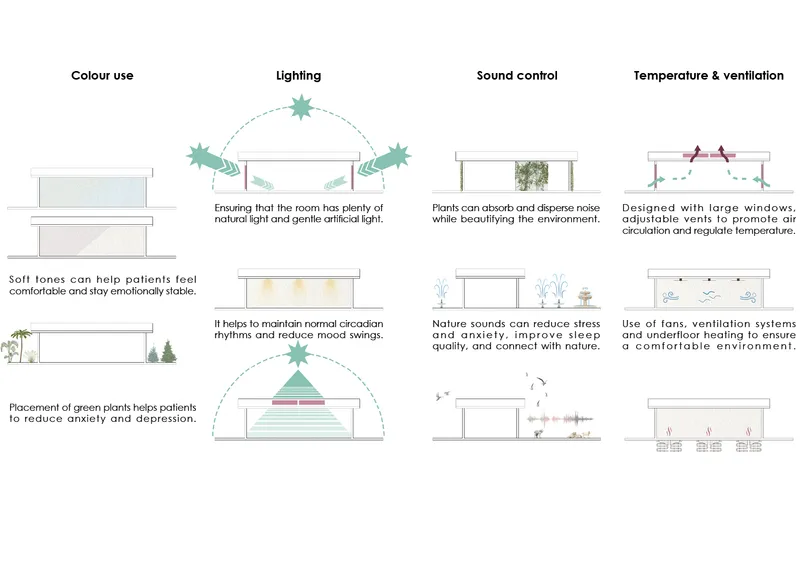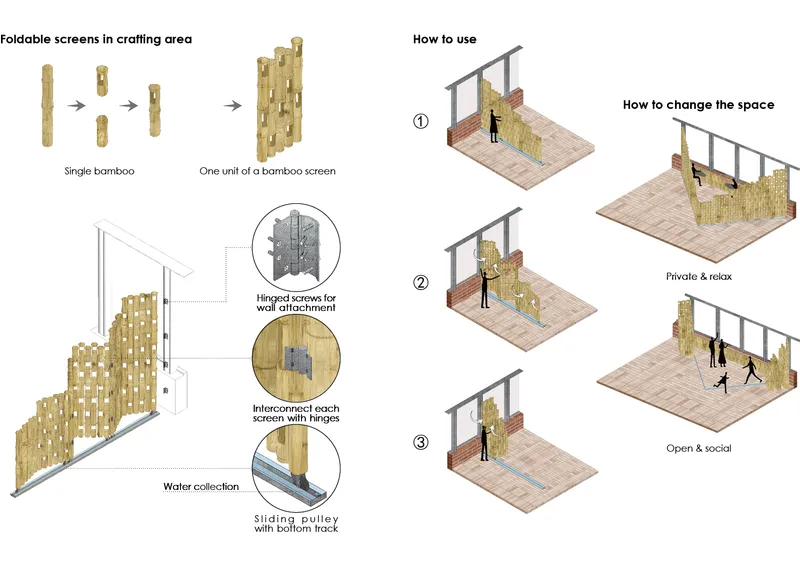As modern society continues to evolve, stress and negative emotions triggered by situations such as career, family, and social relationships have become varied and increasing. Bipolar disorder is a serious mental health problem in which the sufferer’s mood fluctuates regularly or erratically between the extremes of mania and depression. However, because the causes of bipolar disorder are complex and uncertain, treatment requires a comprehensive and targeted approach. At the same time, traditional approaches to mental health regulation have limitations in improving their quality of life. In the face of these challenges, the most important thing is to find non-pharmacological treatments that can help patients stabilize their moods, reduce their symptoms, and live normal lives.
To address these issues, the project designed a dedicated horticultural therapy space in an herb garden at London Chelsea Physic Garden. Combining information and stories shared online, I collated the typical mood swings and behaviors of people with bipolar disorder. It was hoped that the space could be used for mood calming and positive behavior induction. The focus of this space was to train the patient’s behavioral and sensory skills through botanical gardening, care and creative activities.
In addition, I hope to help patients stabilize their moods, promote healthy lifestyles, and enhance their self-worth and sense of accomplishment through horticultural therapy. The space also provides a communication platform for patients’ family members, friends and everyone in the community to learn about and understand bipolar disorder. It helps people with bipolar disorder to ‘be seen’ and encourages them to be positive about their emotions and to gain relief and healing through the feeling space. The space not only provides a supportive environment for recovery, but also offers some insights for future exploration of non-pharmacological therapeutic space design.
The space combines spatial psychology, horticultural therapy and the connection between people and nature to reflect the therapeutic benefits of nature while ensuring safety and stability. It aims to inspire the future design of health spaces and promote the overall well-being of society.
